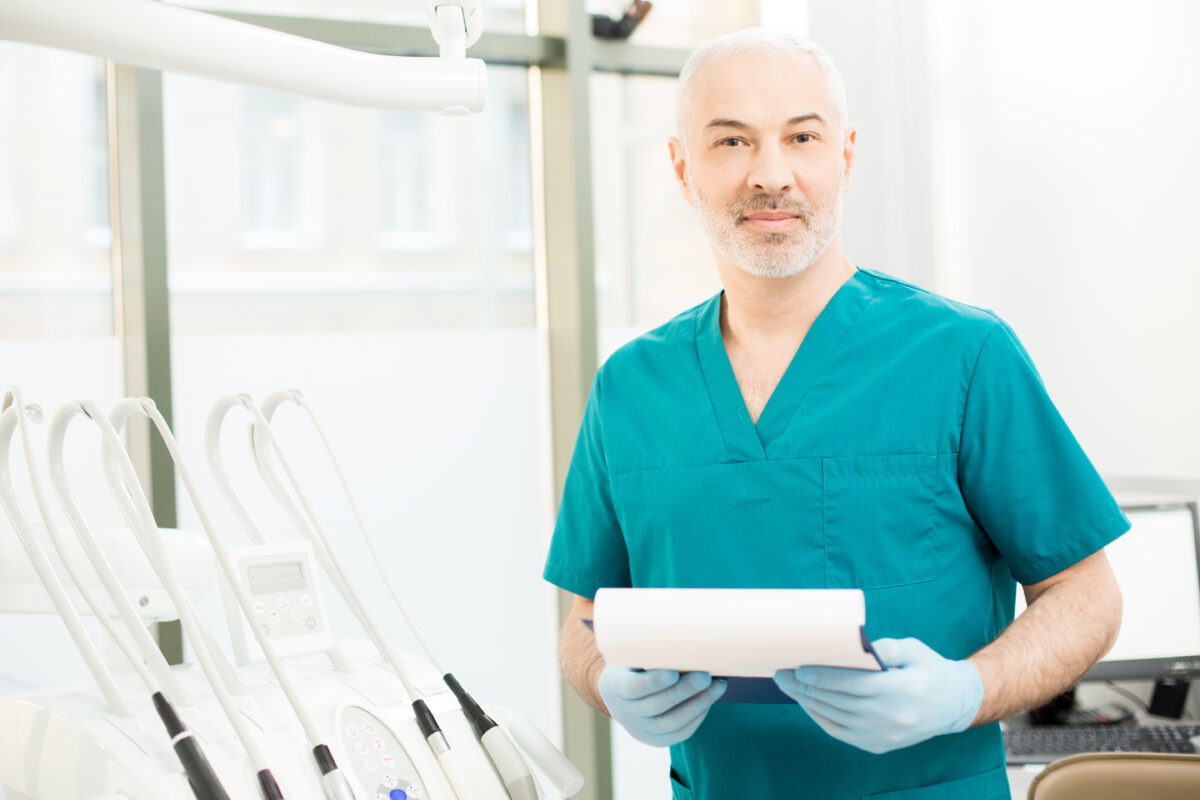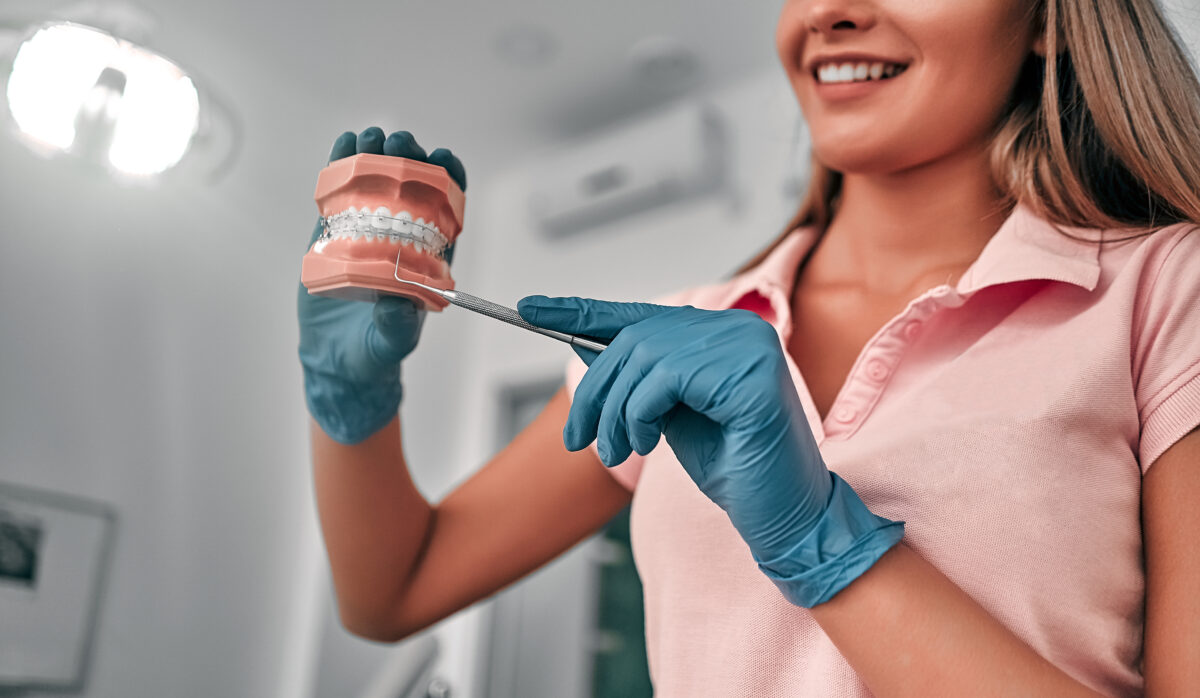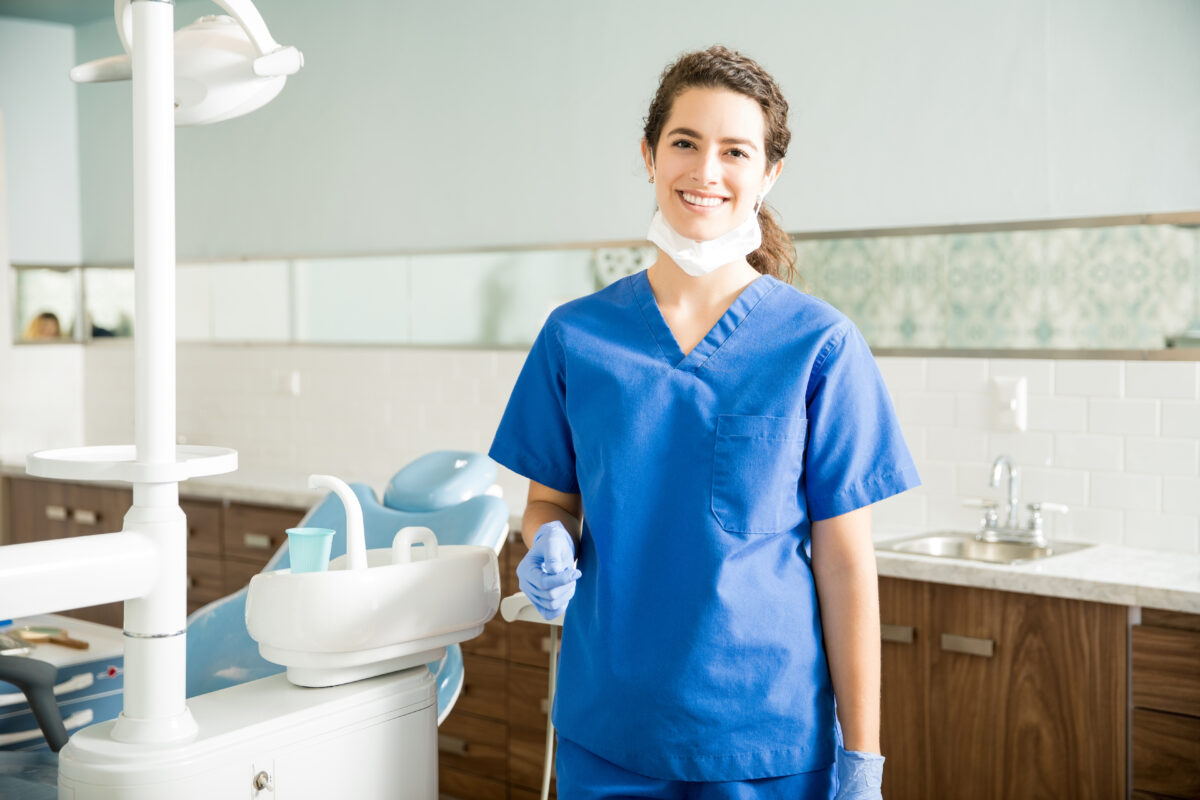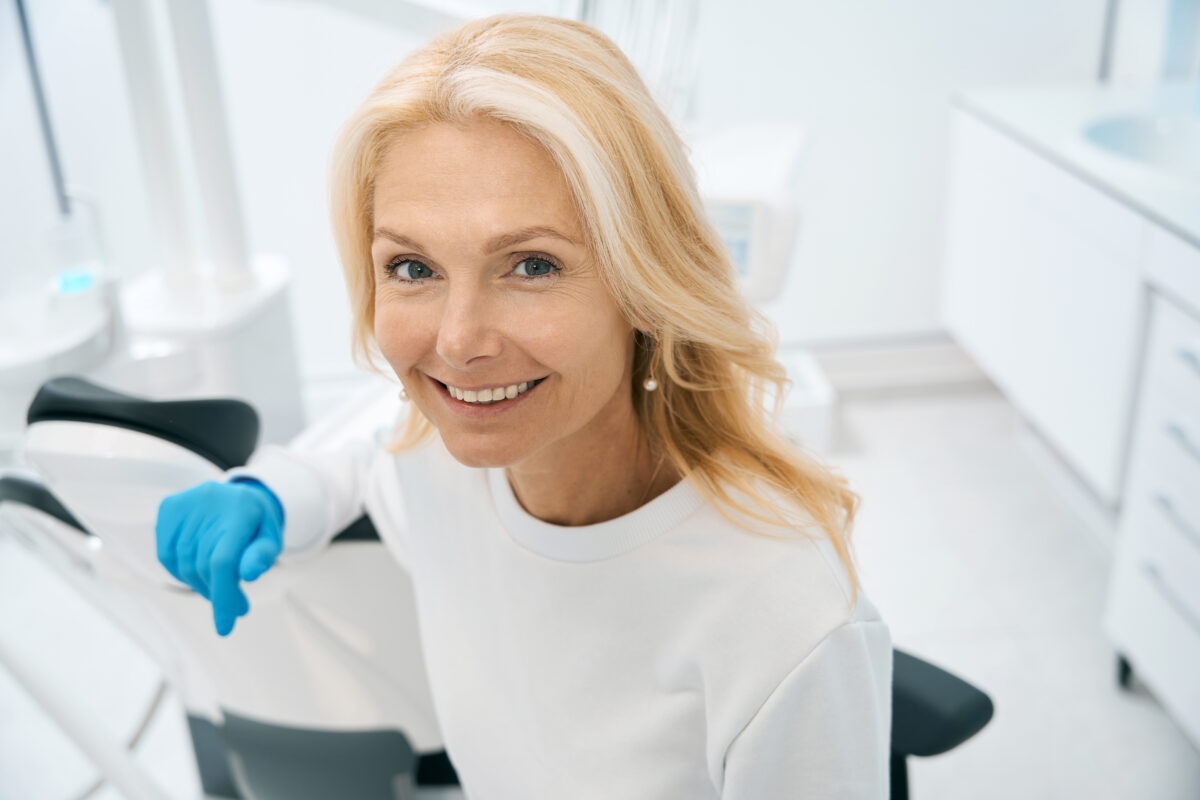
Professional dental hygiene is an essential part of oral health. It helps prevent plaque, tartar, tooth decay and gum disease, and improves your breath and the appearance of your smile.

A professional dental hygiene procedure always starts with a thorough oral examination. At this stage, the hygienist examines not only the teeth, but also the gums, tongue and oral mucosa as a whole.
What we assess during the examination:
This stage helps to determine exactly how intensive cleaning will be needed, as well as to spot problems early on that may require further dental treatment. For each patient, we provide personalised recommendations on how to take better care of their oral health at home.
After the oral examination, the main hygiene step begins – the removal of tartar and plaque. This procedure is essential to prevent the risk of cavities, gingivitis and other oral diseases.
How it works:
This stage is completely safe and, thanks to modern technology, comfortable. If the gums are sensitive or inflamed, there may be slight sensitivity during the procedure, but after cleaning the gums will improve and the discomfort will pass quickly.

Once the plaque and tartar have been removed, the next important step is to polish your teeth. This procedure not only gives your teeth an aesthetic shine, but also significantly reduces the risk of plaque and tartar build-up.
How polishing works:
The procedure is quick, painless and very pleasant for many patients as the immediate results are visually noticeable.

After brushing and polishing, the procedure is completed with the application of fluoride or mineral preparations. This step is particularly important for strengthening tooth enamel and preventing tooth decay.
How it works:

Frequently asked questions
We recommend dental hygiene every 6 months. If you have gum problems, tartar build-up or braces, you may need more frequent hygiene – every 3-4 months.
No, the procedure is usually painless. If the gums are sensitive, there may be some discomfort, but we always adjust the intensity of the cleaning and may use a superficial anaesthetic to ensure comfort.
Some patients may temporarily experience mild sensitivity, especially if they have had a lot of tartar or gingivitis. This goes away within 1-2 days and fluoride application helps to reduce this sensation.
Yes, teeth look visibly cleaner and brighter after hygiene, as plaque and surface pigments are removed. However, this is not whitening – the natural shade of the tooth remains unchanged.
Yes, even with careful home care, tartar and plaque build up and cannot be removed with a regular toothbrush. Professional hygiene complements home care, helps prevent disease and keeps your smile healthy.
Mandatory. Teeth whitening should only be performed on clean enamel to ensure even results and avoid sensitivity or complications.
OUR EXPERTS
Hygienist
Hygienist
Hygienist
Key facts about the clinic
Our clinic offers the latest dental technologies and a personal approach to each patient. We guarantee the highest quality materials and professional care.
Valis Dental has been operating since 1992 and is one of the first private dental practices in Latvia. Our long-standing experience allows us to provide safe and effective solutions.
We offer everything from routine hygiene and whitening to complex implant and orthodontic procedures. We have everything you need for a beautiful and healthy smile.
We use the latest digital diagnostic and treatment methods to ensure painless and effective treatment. Our clinic has a friendly and homely atmosphere.